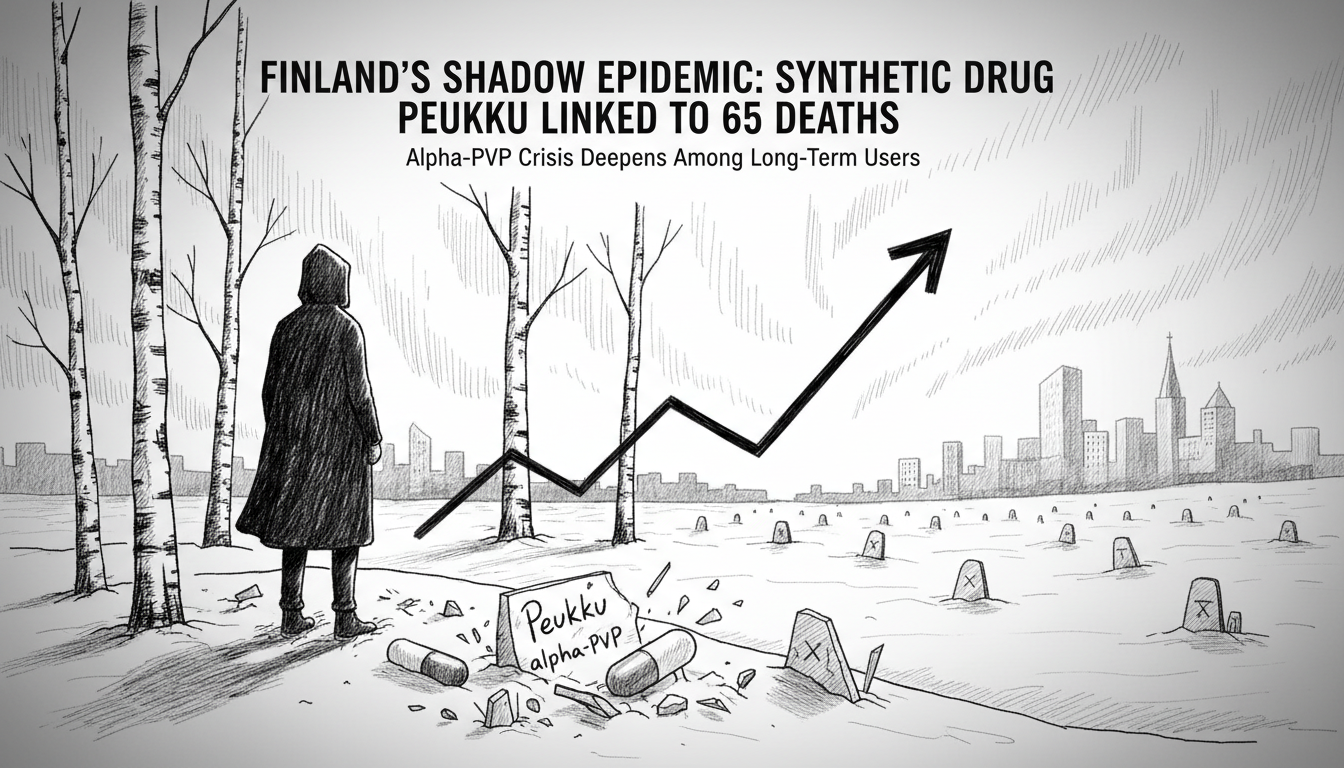Finnish authorities report a sharp increase in deaths involving the synthetic drug alpha-PVP, commonly known as Peukku. The substance has been detected in 65 deceased individuals so far this year, surpassing last year's total of 51 cases by August alone.
Forensic chemist Pirkko Kriikku emphasizes these are preliminary findings. The presence of alpha-PVP doesn't automatically indicate it caused death. Further investigation will determine whether the drug directly contributed to fatalities or played a secondary role.
Peukku consumption occurs through smoking, injection, snorting, or oral use. The drug emerged as a significant concern in Finland starting in 2022. Before that year, cases rarely exceeded ten annually.
Monthly statistics show consistent patterns. October recorded at least seven cases, September had six, August eight, and July eleven. This averages approximately two cases weekly across Finland.
Most victims share similar backgrounds. They're primarily long-term substance users rather than young experimenters. This pattern suggests established drug networks rather than new user groups.
Last year's data provides crucial context. Among 51 alpha-PVP cases, 16 involved direct poisoning. Another 23 cases saw the drug contributing to deaths through accidents or incidents where intoxication played a significant role.
Finland's broader drug death statistics reveal deeper issues. The country recorded 247 drug-related deaths this year, following 2023's record 310 cases. Polydrug use remains common, with multiple substances often combined with medications or alcohol.
The national drug landscape shows evolving trends. Synthetic opioids long dominated accidental or unclear overdoses. Stimulants like amphetamines and Peukku have dramatically increased their share from six percent to 21 percent over the past decade.
This situation reflects broader European patterns. Synthetic cathinones like alpha-PVP present particular challenges for health services and law enforcement. Their potency and unpredictable effects create heightened risks for users.
Finnish authorities face complex challenges. Balancing prevention, treatment, and enforcement requires coordinated efforts across multiple agencies. The rising Peukku cases indicate these substances are establishing footholds in existing drug markets.
International observers note Finland's approach combines strict enforcement with harm reduction. The country maintains Nordic traditions of comprehensive social services while adapting to new synthetic drug threats.
What comes next matters most. Health officials monitor whether this trend represents temporary market fluctuation or sustained pattern. Treatment services must adapt to address synthetic stimulant addictions specifically.
The human cost extends beyond statistics. Each case represents personal tragedy and community loss. Understanding these patterns helps shape more effective responses to substance abuse crises.

